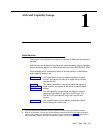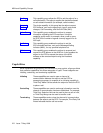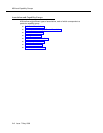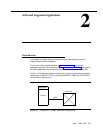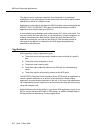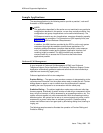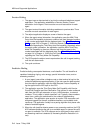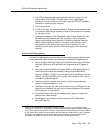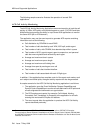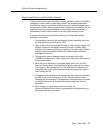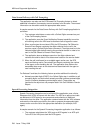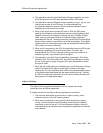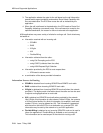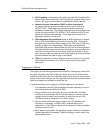
ASAI and Supported Applications
2-4 Issue 7 May 1998
Preview Dialing
1. The agent uses a data terminal to log into the outbound telephone support
application. The application establishes a Domain (Station) Control
association for the agent. There must be one such association for each
agent.
2. The agent enters information indicating readiness to preview data. There
must be one such association for each agent.
3. The adjunct application displays a screen of data to the agent.
4. When the agent enters information, the application uses the ASAI Third
Party Auto-Dial capability to place an outbound call from the agent’s station
to the number associated with the displayed data. See ‘‘Third Party Auto
Dial’’ on page 5-25 in Chapter 5, ‘‘ASAI and Domain Control’’ for more
information regarding the Third Party Auto-Dial capability. Alternately, when
the agent enters information, the application uses the ASAI Third Party
Make Call Capability to place an outbound call from the agent to the
number associated with the displayed data. See ‘‘Third Party Make Call’’
on page 4-4 in Chapter 4, ‘‘ASAI and Call Control’’ for more information
regarding the Third Party Make Call Capability.
5. The ECS sends the adjunct event reports about the call for agent tracking
until the call disconnects.
6. The cycle continues.
Predictive Dialing
Predictive dialing uses special hardware, a call classifier. The call classifier is
capable of detecting ringing, voice energy, special information tones, and an
answering machine.
1. A user (agent) uses either a telephone set or data terminal to log into the
outbound telephone support application. If the user uses the data terminal,
then the adjunct application uses the ASAI Request Feature Capability to
log the agent into the ACD split on the ECS.
2. The application uses the Third Party Make Call Capability with Service
Circuit/Call Classifier and Alert Destination First options to make outbound
calls from the ACD split extension or from a VDN extension, to external
numbers. This is called a “switch-classified” call. Typically, these numbers
come from a calling list maintained for the outbound telemarketing
application. The application uses queries to monitor ECS resources such
as agents logged into the split, available classifiers, and available trunk
resources. The application usually has a pacing algorithm that places calls
ahead of available agents.
3. When the call classifier detects answer or an answering machine, the ECS
ACD software distributes the call to an available agent or queues the call if
no agent is available. The ECS software can be configured to drop calls if
an answering machine is detected (if Answering Machine Detection is in
use).




